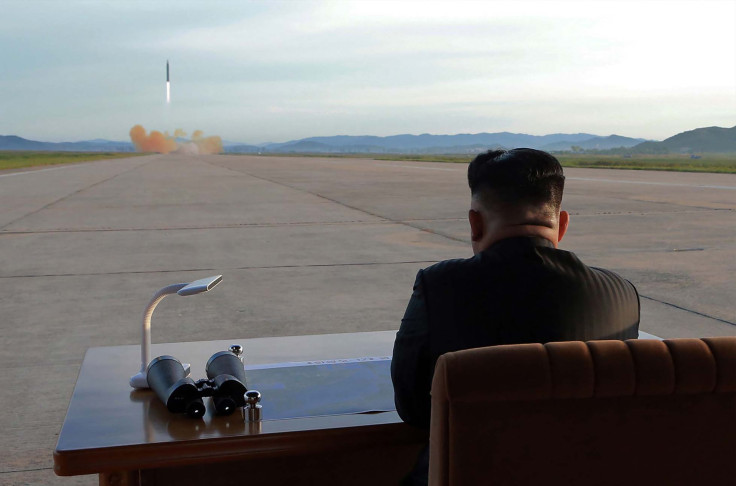Air Force’s Microwave Weapon Technology Can Fry North Korea’s ICBMs

The U.S. has developed microwave weapons, which its advocates say can be used to prevent missile launches by North Korea by frying their electronics.
The Air Force and other government agencies have been working on using microwaves as weapons for over two decades, and the Air Force Research Laboratory began work on CHAMP, which stands for Counter-electronics High Power Microwave Advanced Missile Project, in April 2009.
These weapons are basically emitters of high-power microwaves (HPM) to disable electronic systems. Champs can be fitted into an air-launched cruise missile and delivered from B-52 bombers. They have a range of 700 miles.
The weapons are not operational as of now but were a topic of discussion at an August White House meeting related to North Korea, according to two U.S. officials with direct knowledge, NBC News reported.
Some less-advanced versions of the emitters successfully disabled improvised explosive devices (IEDs) and small drones in Iraq and Afghanistan, NBC News reported.
But the developers at the Air Force Research Laboratory had to reduce the size and weight of the emitter, which further had to be matched with an onboard power source sufficient to drive the microwave pulses.
It was only in October 2012, that the Air Force was able to conduct the first operational testing of the weapon.
So what are HPM weapons exactly? Attempting to describe it, Sen. Martin Heinrich (D-NM) said: “Think about when you put something in your microwave that has metal on it. You know how badly that goes? Imagine directing those microwaves at someone's electronics."
NOW on @NBCNightlyNews: @CynthiaMcFadden reports on the US microwave weapons that proponents believe could stop North Korea from launching missiles. pic.twitter.com/nlptHkkngl
— NBC Nightly News with Lester Holt (@NBCNightlyNews) December 4, 2017
Retired Lt. Gen. David Deptula, who ran the air wars in Afghanistan and Iraq and retired as the head of Air Force intelligence, also weighed in on the usefulness of these weapons. “Command and control centers are filled with electronic infrastructure which is highly vulnerable to high powered microwaves,” Deptula said.
The first operational test was carried out in the Utah Test and Training Range, a 2,500-square-mile testing area larger than Delaware.
Mocked-up buildings in the area were rigged with communications and computer systems that simulated the "representative WMD production equipment" reportedly being developed by Iran and North Korea.
"These high-powered microwave signals are very effective at disrupting and possibly disabling electronic circuits," Mary Lou Robinson, head of weapons development at the Air Force Research Laboratory in Albuquerque, told NBC News.
She further added that the first test proved to be a success since the weapons performed exactly as expected. "It absolutely did exactly what we thought it was going to do,” she said. “We had several different target classes in those facilities, and we predicted with almost 100 percent accuracy … which systems were going to be affected, which systems failed, and how.”
Further tests and experiments have been conducted on the weapons, although details of those have been kept under wraps. The Air Force also claimed to have developed a much stronger power source, which converts the microwave weapon into a “Super CHAMP."
The new and advanced microwave weapon is "capable of flying into a contested area and disabling an adversary's electronic systems," according to a December 2016 Air Force Research Laboratory document.
These weapons can also be the ultimate answer to the constant threat of intercontinental ballistic missiles that North Korea has been threatening to attack the U.S. with. An HPM can be launched into the North Korean airspace to disable their ICBMs. However, since the range of an HPM is not that “far-ranging,” the weapon has to get “close” to the target in order to work.
© Copyright IBTimes 2025. All rights reserved.






















